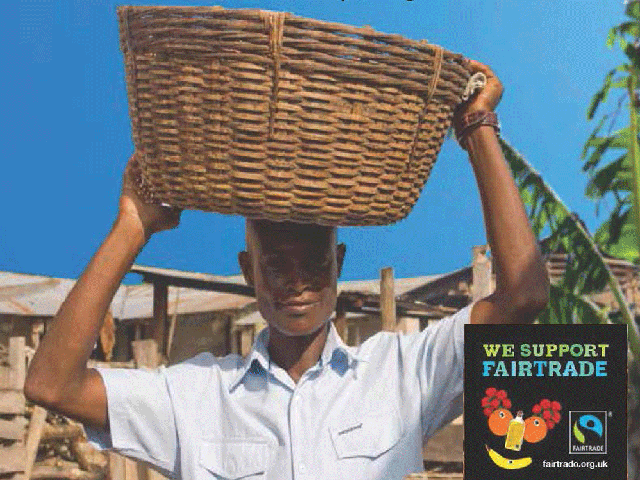.jpg) Cocoa butter is the heart and soul of fine chocolate, providing its distinctive flavour, smooth texture, and luxurious finish. For years, it has been a key ingredient in high-quality chocolate products. However, the cost of cocoa butter has surged in recent years, driven by various global challenges. In response, the chocolate industry has turned to Cocoa Butter Equivalent (CBE), a cheaper alternative designed to mimic the properties of cocoa butter. While CBE may offer short-term financial relief for manufacturers, it could have far-reaching consequences for cocoa farmers. But where does this leave them?
Cocoa butter is the heart and soul of fine chocolate, providing its distinctive flavour, smooth texture, and luxurious finish. For years, it has been a key ingredient in high-quality chocolate products. However, the cost of cocoa butter has surged in recent years, driven by various global challenges. In response, the chocolate industry has turned to Cocoa Butter Equivalent (CBE), a cheaper alternative designed to mimic the properties of cocoa butter. While CBE may offer short-term financial relief for manufacturers, it could have far-reaching consequences for cocoa farmers. But where does this leave them?
Why is Cocoa Butter So Expensive?
Cocoa butter is derived from cocoa beans, a labour-intensive crop that requires extensive processing. The harvesting, fermenting, and drying of cocoa beans are complex and resource-heavy, making cocoa butter one of the more expensive ingredients in chocolate production. On top of this, global demand for fine cocoa continues to grow, and as climate change and supply chain instability worsen, cocoa butter prices remain volatile. The additional pressure for ethical sourcing and fair trade initiatives has only intensified the situation, further driving up costs.
For many manufacturers—especially those focused on mass-market production—these price hikes are challenging. To maintain competitive pricing and protect profit margins, some have turned to CBE, a more affordable alternative that offers some of the same benefits as pure cocoa butter, albeit with a few trade-offs.
What is Cocoa Butter Equivalent (CBE)?.jpg)
Cocoa Butter Equivalent (CBE) is a blend of vegetable fats designed to replicate cocoa butter’s smooth texture and glossy finish at a fraction of the cost. Widely used in large-scale chocolate production, CBE allows manufacturers to cut costs, often prioritising price stability over authenticity and flavour. Though it serves as a cost-effective solution for mass-market chocolate, CBE raises questions when it comes to premium, bean-to-bar chocolate makers who focus on quality, craftsmanship, and unique flavour profiles.
The Impact of CBE on Cocoa Farmers
While CBE offers manufacturers a way to keep production costs down, the consequences for cocoa farmers—especially those producing fine cocoa—are potentially significant.
1. Reduced Demand for Cocoa Butter
If more manufacturers turn to CBE to curb rising cocoa butter prices, the demand for cocoa beans—and consequently for cocoa butter—may decline. Cocoa farmers, particularly those who focus on fine or single-origin beans, could see their beans fetching lower prices or being less sought after. This shift could threaten the livelihoods of farmers who rely on the premium prices associated with high-quality cocoa butter.
2. The Volatility of Cocoa Prices
Cocoa farmers are already vulnerable to the unpredictable nature of the global market. Prices fluctuate due to various factors like climate change, geopolitical issues, and supply chain disruptions. While CBE may provide a short-term financial buffer for manufacturers, cocoa farmers are left to contend with these volatile market forces. If CBE use increases and cocoa butter prices fall, farmers could see their incomes squeezed, especially those in developing countries who are already operating with thin margins.
3. Pressure on Small-Scale Farmers
Cocoa farmers, especially those in regions where cocoa is a primary source of income, depend on steady demand and stable prices for their beans. If CBE becomes a widespread alternative, it could further limit the amount that farmers can charge for their cocoa beans. Without stronger support from the industry—such as fair pricing, better access to certification programmes, or investments in sustainable farming practices—farmers may struggle to remain financially viable.
4. Ethical Sourcing and Sustainability Concerns
While CBE is often marketed as a more sustainable option, made from vegetable fats that can be responsibly sourced, there is growing concern about whether these fats truly align with the sustainability values that fine cocoa producers champion. The ethical sourcing of vegetable fats can vary, and their environmental impact may not be as transparent as cocoa. For cocoa farmers, this could mean less market demand for their ethically produced beans, especially if CBE alternatives are seen as a more “eco-friendly” option.
5. The Need for Certification and Transparency
As the industry grapples with rising production costs and shifting demands, the pressure for cocoa farmers to maintain high-quality, traceable, and ethically produced cocoa beans is growing. Certifications like Fair Trade or Rainforest Alliance can help farmers command higher prices, but not all farmers have access to the resources or knowledge needed to obtain these certifications. For those who do, however, these certifications could offer a competitive edge in the marketplace, provided the industry continues to value sustainability and quality over cost-cutting measures.
Balancing Cost and Quality: A Complicated Equation
Cocoa Butter Equivalent may be an affordable alternative for large-scale producers, but it comes at a cost to the authenticity of the final product. While it mimics the texture and finish of cocoa butter, it lacks the complex, nuanced flavours that define premium, single-origin chocolate. For manufacturers who prioritise high-quality chocolate, particularly artisan bean-to-bar makers, CBE may not be an ideal solution.
For cocoa farmers, the growing reliance on CBE poses a serious risk. As the demand for CBE rises, the premium market for high-quality cocoa could shrink, impacting farmers who depend on these markets to sustain their livelihoods. At the same time, if the industry continues to prioritize cost over quality, the farmers producing fine cocoa may see their incomes diminish.
 w.jpg) What Needs to Change?
What Needs to Change?
As the chocolate industry evolves, the need for a balance between cost efficiency and quality becomes ever more pressing.
While CBE provides a viable solution for mass-market producers trying to manage rising costs, it must be recognised that this shift could harm the farmers at the heart of the cocoa industry. Ensuring that cocoa farmers receive fair prices for their beans and have access to resources for sustainable farming practices will be key to preserving the integrity of the cocoa supply chain.
For chocolatiers and consumers who value fine, high-quality chocolate, the decision to continue using cocoa butter—and to support farmers who grow the beans—is more important than ever. It’s crucial that we balance the drive for cost-effectiveness with the need to sustain the livelihoods of the farmers who produce the raw material at the core of the chocolate we all love.
Only by investing in these farmers and supporting fair trade initiatives can we ensure a sustainable and ethical future for the cocoa industry.
farmers can make butter on the farm
